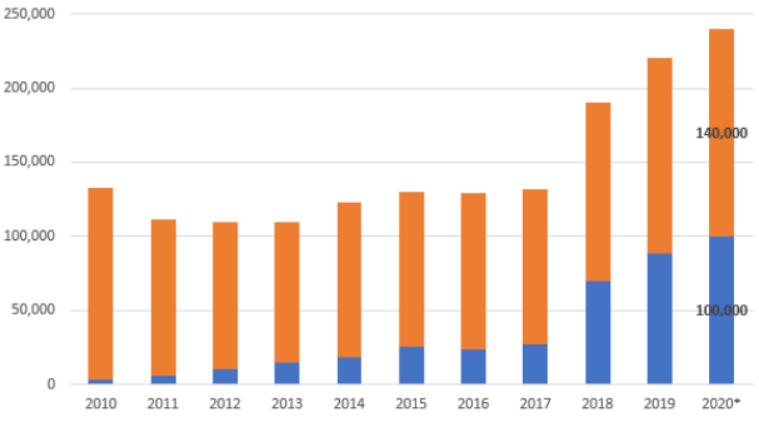News
Your current location:Home> News
Global rare earth production will increase by 9% in 2020, and China's share will decline
According to the preliminary data released by the US Geological Survey (USGS), the output of rare earth metals (REE) mined worldwide in 2020 is estimated to be 240000 tons of rare earth oxide equivalent, an increase of 9% compared with 220000 tons in 2019. China has once again become the largest producer of rare earth metals, with an output of 140000 tons, but its proportion in the total global output has declined, The proportion of other countries reached an all-time high of 42% (100000 tons).

The orange part represents China, and the blue part represents other countries. The U.S. Geological Survey said that according to the data of China's Ministry of industry and information technology, China's rare earth production quota in 2020 is 140000 tons, including 12085 tons of light rare earths and 1915 tons of ion adsorption clay.
According to the U.S. Geological Survey, the main economic sources of rare earth are bastnaesite, monazite, cerium niobium perovskite and Hongshi type ion adsorption clay. Rare earth species are relatively rich, with a total of 17, including scandium, yttrium and lanthanides.
Among rare earth elements, cerium has the highest abundance in the earth's crust, ranking 25th among the 78 common elements in the earth's crust, with a abundance of 60 parts per million. In addition, the abundance of thulium and lutetium with the lowest abundance is about 0.5 parts per million. The basic form of rare earth is a shiny metal with a color ranging from iron gray to silver. It is typically characterized by softness, plasticity and ductility, and is usually active, especially at high temperature or powder state.


